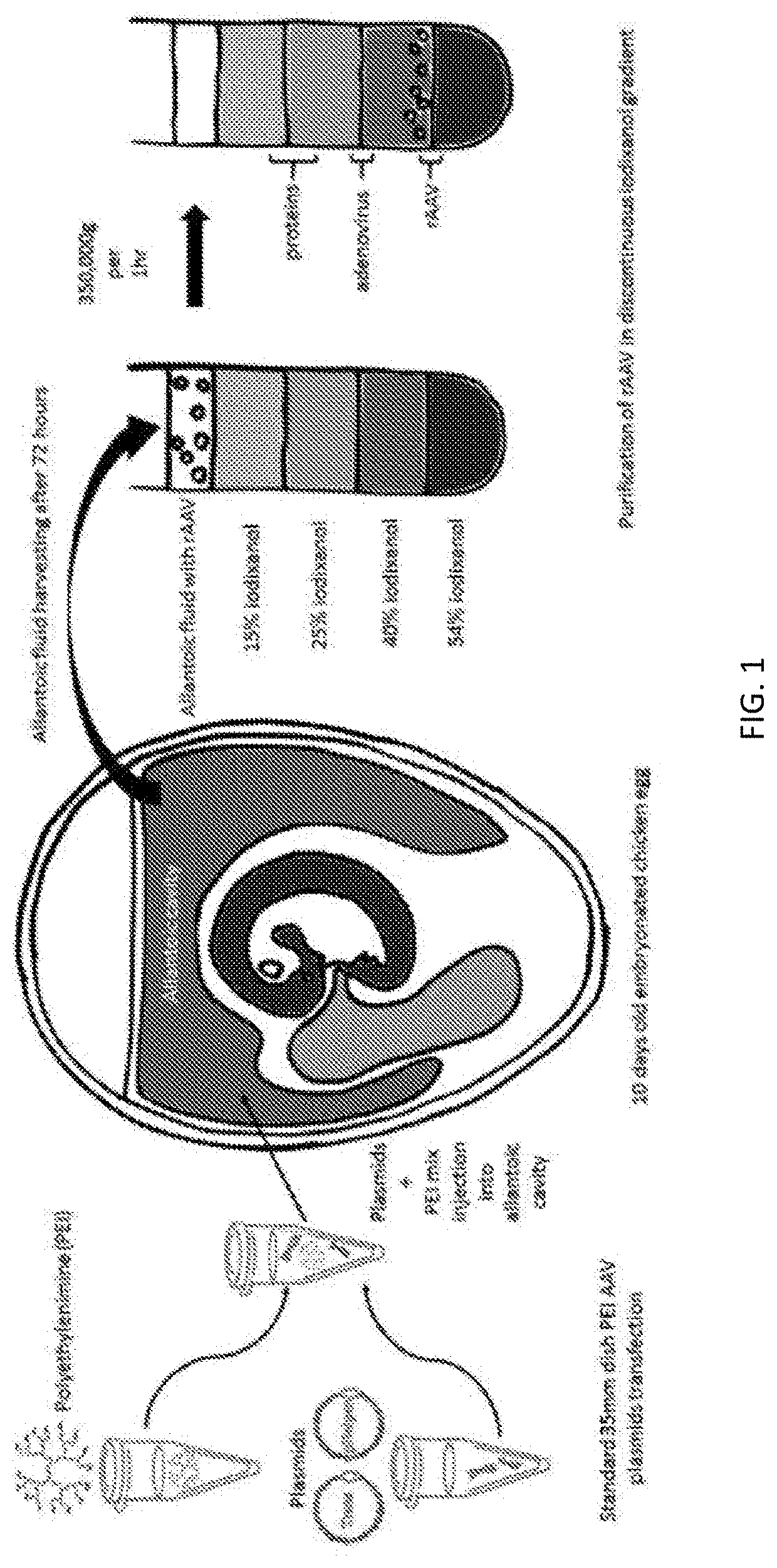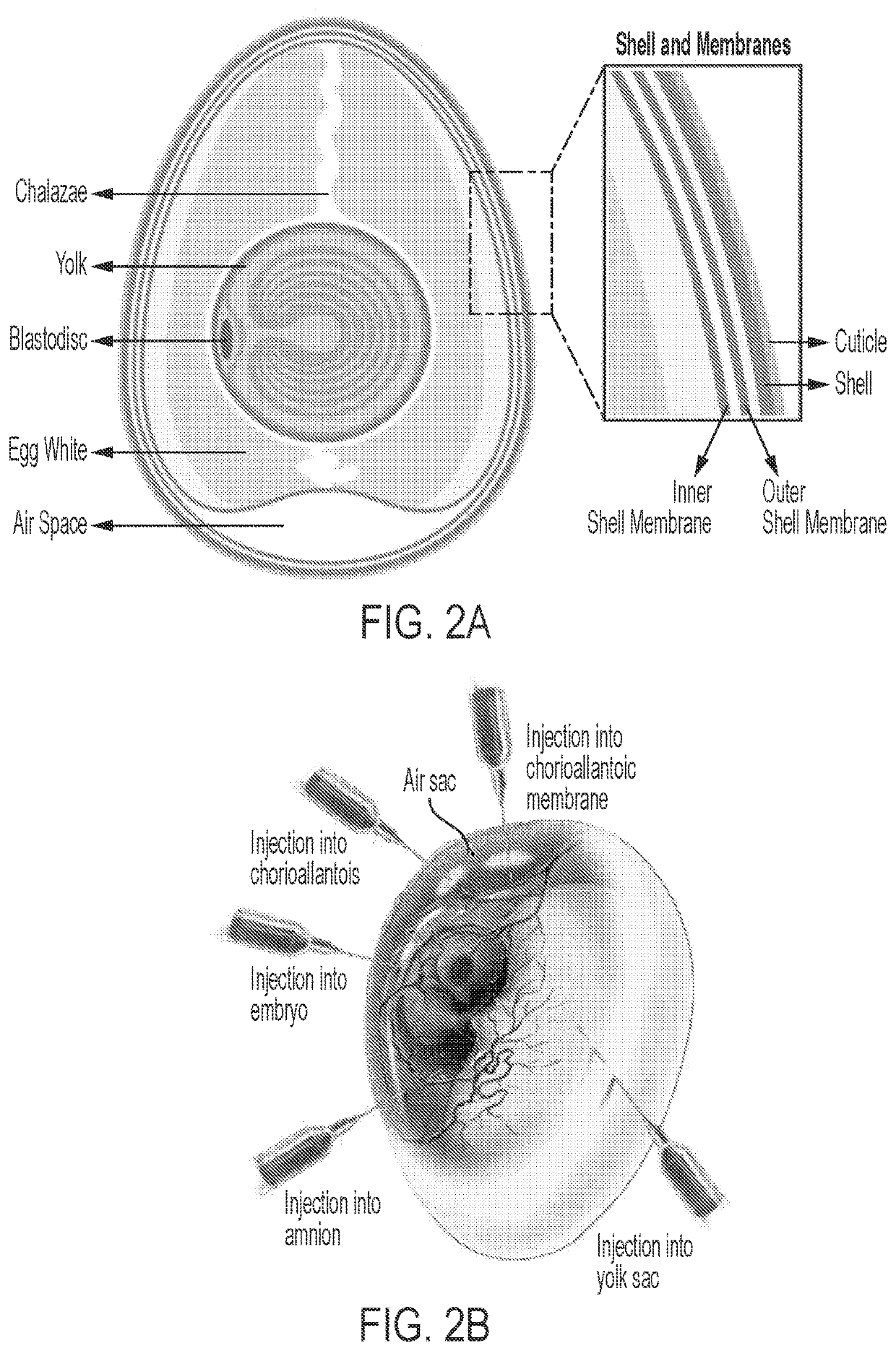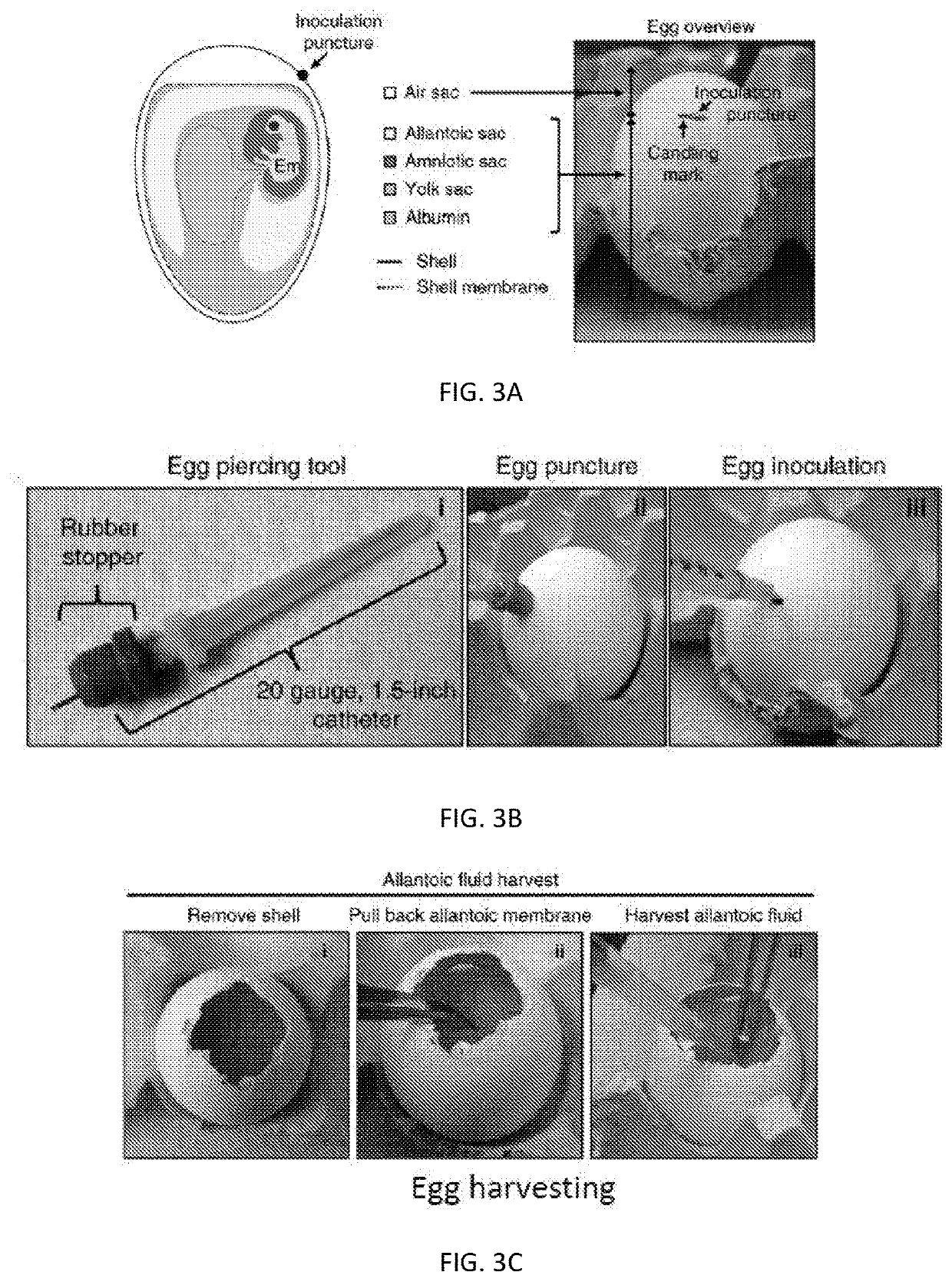Improved production of recombinant aav using embryonated avian eggs
a technology of avian eggs and aav, which is applied in the direction of viruses/bacteriophages, dsdna viruses, genetically modified cells, etc., can solve the problems of genotoxic aav rep protein, potential residual adenovirus particles, and loss of vector or insert integration
- Summary
- Abstract
- Description
- Claims
- Application Information
AI Technical Summary
Benefits of technology
Problems solved by technology
Method used
Image
Examples
example 1
[0145]PEI Transfection Using a Double Transfection Protocol, for Packaging of rAAV
[0146]For the production of a first set of rAAV virions, the double transfection method was used. In a microcentrifuge tube, each of i) 675 ng of a plasmid comprising a nucleic acid encoding an EGFP transgene operably linked to a chicken β-actin (CBA) promoter (CBA-EGFP), ii) 2025 ng of a plasmid encoding AAV nucleic acid (AAV1 rep, AAV1 cap and adenovirus helper genes), iii) 10 μl of 1.5M NaCl, and water were combined (final volume 100 μl). Reagents are shown in Table 1. The solution was then mixed by pipetting several times. The AAV1 rep and cap were derived from human AAV1 virus. In some embodiments, larger volumes of 1.5M NaCl are used, such as 150 μl.
[0147]A dilute polyethylenimine (PEI) solution was added into the microcentrifuge containing the plasmids and was mixed by pipetting several times, to prepare the virions for PEI-mediated transfection prior to inoculation. This solution was subsequent...
example 2
on of rAAV Particles in Embryonated Chicken Eggs, and Validation of Packaging in Mammalian Cells
Propagation in Chicken Eggs
[0157]The rAAV recovered from the above packaging protocol was inoculated into a second batch of embryonated chicken eggs for long-term and larger scale propagation. It was sought to determine whether propagation in eggs could provide higher yields of AAV vector than other methods. Purified rAAV-CBA-EGFP (10 μl) plasmid was injected into ten-day old embryonated chicken eggs and embryos were harvested after 7 days. Embryos were formalin-fixed and brain was harvested to perform histological analysis of EGFP expression (paraffin sections). These results shown in FIG. 4 suggested the feasibility that multiple AAV serotypes could be propagated in embryonated eggs.
[0158]Following propagation and purification by iodixanol gradient, an average amount of about 150 μl of pure AAV vector per egg was recovered.
[0159]The above experiment was repeated with several different A...
example 3
mbryonated Egg Production Methods Via Allantoic Inoculation
[0165]Next, the rHSV inoculation protocol was evaluated. That is, it was sought to validate that use of rHSV helper viruses in the packaging and propagation of AAV particles was compatible with AAV egg production and to investigate the biodistribution of rHSV-AAV particles in the embryonated chicken egg. In these experiments, in vitro inoculation of an allantoic vesicle encased in a chorioallantoic membrane (CAM), as extracted from an embryonated chicken egg and placed in a 10 cm Petri dish, served as a proxy for inoculation of the egg itself. rHSV-AAV vectors encoding humanized green fluorescent protein (hGFP) transgene under the control of a chicken beta actin (CBA) promoter and rHSV helper viruses containing a cassette containing the rep2 and cap2 / cap9 genes from AAV were co-infected into six CAMs (labeled CAMs 1-6) extracted from ten day old embryonated chicken eggs. Inoculation was by injection through the chorioallanto...
PUM
| Property | Measurement | Unit |
|---|---|---|
| Time | aaaaa | aaaaa |
| Time | aaaaa | aaaaa |
| Time | aaaaa | aaaaa |
Abstract
Description
Claims
Application Information
 Login to View More
Login to View More - R&D
- Intellectual Property
- Life Sciences
- Materials
- Tech Scout
- Unparalleled Data Quality
- Higher Quality Content
- 60% Fewer Hallucinations
Browse by: Latest US Patents, China's latest patents, Technical Efficacy Thesaurus, Application Domain, Technology Topic, Popular Technical Reports.
© 2025 PatSnap. All rights reserved.Legal|Privacy policy|Modern Slavery Act Transparency Statement|Sitemap|About US| Contact US: help@patsnap.com



